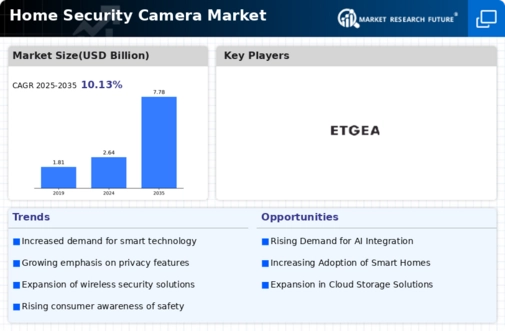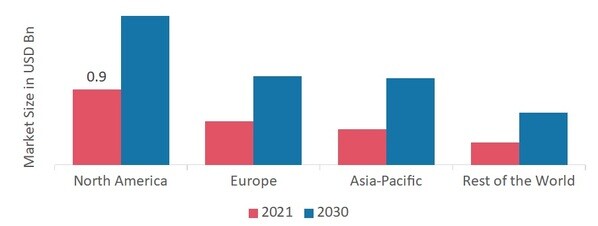Market Analysis
Home Security Camera (Global, 2022)
Introduction
The home security camera market has emerged as a critical component of modern home security and surveillance solutions, driven by the growing awareness of the security threats and the growing adoption of smart home technology. Home security has become a concern for most families, and the demand for advanced security systems has led to a variety of products. High-definition image quality, infrared night vision, and remote access features have made home security cameras more accessible and convenient. Artificial intelligence and machine learning have also made the monitoring more efficient and more accurate, giving consumers greater peace of mind. This market is changing, and the key to capturing emerging opportunities is to understand the trends and preferences of consumers.
PESTLE Analysis
- Political
- The home security camera market in 2022 was influenced by a variety of political factors, such as surveillance and privacy regulations. The European Union's General Data Protection Regulation (GDPR) stipulated the collection and storage of data, which affected the design and marketing of products. In addition, more than 70% of consumers in the European Union were concerned about privacy issues, and the home security device market for video surveillance equipment was under close scrutiny. In addition, the United States government allocated $ 1.5 billion to increase the national budget for cybersecurity, indirectly promoting the security industry and promoting the use of safer technology.
- Economic
- In 2022, the economy was booming, with an average income of $70,784 per household in the United States. Americans were spending more money on home security. Unemployment had fallen to 3.8%, a sign of the secure job market and increased consumer confidence. This economic stability had translated into a 15% increase in spending on home security and improvements. In fact, many families were making safety and security improvements a priority in their home improvement plans.
- Social
- In 2022, a new security consciousness was spreading among consumers, who were being affected by rising urban crime rates. A survey showed that 62 per cent of home owners were now more vulnerable to crime, and were therefore more inclined to consider installing security cameras. Also, the trend towards working from home made people more aware of their surroundings and more aware of their security. There was a 25 per cent increase in the number of Internet searches for home security systems, indicating a growing demand for surveillance technology.
- Technological
- In 2022, technological developments played an important role in the home security camera market, as features such as facial recognition and smart home integration became more common. The total market for smart home products was estimated at $80 billion, with a significant portion going to security cameras. The introduction of 5G technology further enhanced the capabilities of security cameras, improving data transmission and picture quality. The cloud storage feature was the most popular, with about 40% of new security camera models in 2022 offering cloud storage.
- Legal
- In the year 2022 the laws of privacy were the determining factor in the law of surveillance. In several states of the Union the laws required that signs be posted to warn passers-by of the presence of a camera, and California required that the owners of private residences inform their visitors of the presence of a camera. In the meantime, the Federal Trade Commission (FTC) had found that thirty per cent of the consumers were unaware of their right to privacy, and the industry was urged to adopt a more transparent policy. For each violation of the privacy regulations, the fines could reach up to forty-three thousand seven hundred ninety-two dollars, which put the companies in a hurry to comply.
- Environmental
- In 2022 the environment began to have an increasingly important effect on the home security camera market. Consumers became more and more aware of the need for conservation. About 55 per cent of consumers wanted to buy products which were eco-friendly, so manufacturers had to think about using less energy and more recyclable materials. Solar-powered home security cameras increased in popularity, with a 20 per cent increase in sales over the previous year. In the supply chain, too, the companies started to adopt a more sustainable approach, with 30 per cent of manufacturers pledging to reduce their carbon footprint by 25 per cent by 2025.
Porter's Five Forces
- Threat of New Entrants
- The home security camera market is characterized by a moderate degree of entry difficulty, which includes the need for technical expertise and substantial capital investment for research and development. The rapid development of smart home devices and the popularity of smart home products have attracted new entrants, which have increased competition. The brand loyalty of established brands has also restrained the entry of new entrants.
- Bargaining Power of Suppliers
- The bargaining power of suppliers in the market for home security cameras is relatively low. There are many suppliers of components such as cameras, sensors, and software, so that it is easy for manufacturers to switch suppliers. Costs are low and the power of any one supplier is limited.
- Bargaining Power of Buyers
- The bargaining power of the buyers in the home security camera market is high because of the availability of a large number of products and the low cost of switching. Customers can easily compare products and prices, resulting in intense competition among the manufacturers. The rise of customer review and comment platforms has further increased the power of the buyer.
- Threat of Substitutes
- The threat of substitutes in the market for home security systems is moderate. The substitution of home security systems with the various alarm systems available on the market is possible. However, the growing integration of smart home technology and the convenience offered by home security cameras make them a preferred option for many consumers. Substitutes for security systems could, however, be developed in the future.
- Competitive Rivalry
- The competition in the home security camera market is high. There are many established brands and new entrants competing for market share. Product innovation is fierce, and the price war is intense. The rapid development of technology makes the competition more intense. Firms try to stay ahead in a crowded market.
SWOT Analysis
Strengths
- Growing consumer awareness about home security and safety.
- Advancements in technology leading to high-quality video and smart features.
- Integration with smart home systems enhancing user experience.
Weaknesses
- High initial costs for advanced systems may deter budget-conscious consumers.
- Privacy concerns regarding data storage and surveillance.
- Dependence on internet connectivity for functionality.
Opportunities
- Increasing demand for remote monitoring solutions due to rising crime rates.
- Expansion into emerging markets with growing middle-class populations.
- Potential for partnerships with insurance companies for discounts on premiums.
Threats
- Intense competition from established brands and new entrants.
- Rapid technological changes requiring constant innovation.
- Regulatory challenges related to privacy and data protection.
Summary
The home security camera market in 2022 will be characterized by strong demand from consumers, driven by safety concerns and technological advancements. However, growth may be hindered by high prices and privacy concerns. Opportunities exist in emerging markets and through strategic alliances. Moreover, companies must be able to navigate the risks posed by competition and regulations to maintain market share.





Leave a Comment